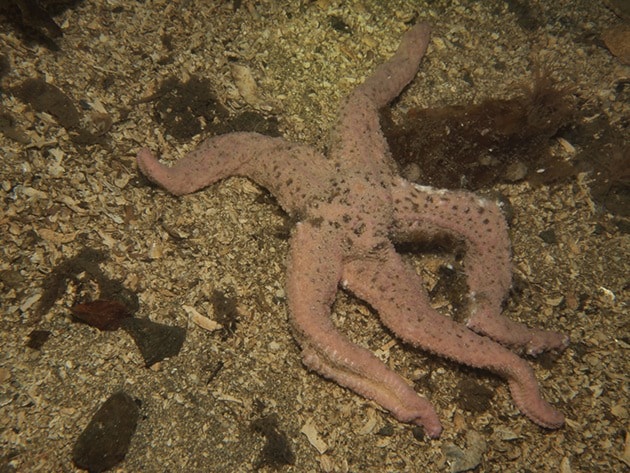Mysterious mass starfish deaths along the Pacific coastline have marine biologists scratching their heads and scrambling to find a cause.
They’re also worried about how seastar wasting syndrome will affect ecosystems spanning Alaska to California, including those in the Greater Victoria area.
"We've seen it all along the Saanich Inlet, we've seen it around the Gulf Islands, it started in Howe Sound," said marine biologist Paula Romagosa, curator of Sidney’s Shaw Ocean Discovery Centre.
"It's quite serious. Nothing like this has been seen before, not to this extent."
Just what it is that's wiping out about 30 per cent of the coast's observable starfish is still unknown.
“I’m quite scared, to be honest. We can’t figure out what it is, so there’s no way to control it — or know if it’ll affect our food sources like fish.”
Affected populations including sunflower, sun, basket, leather, pink, common purple, vermillion, and blood stars are dying.
“We believe its some sort of virus,” Romagosa said, “but we haven’t been able to prove it yet.”
Samples have been shipped to Cornell University, UBC, UVic, and California universities.
Divers started noticing melting and dissolving seastars in September in Howe Sound.
"It could be nature taking its course from overpopulation — or something we humans have done," she said.
Romagosa doubts the starfish crisis was sparked by Pacific radiation from the meltdown of Japan’s Fukushima nuclear plant. She said the wasting-syndrome deaths look more like a viral infection – perhaps resembling the human ebola virus – affecting adult seastars.
“Some get bald spots, and get really skinny, and start to disintegrate. With others, their guts start coming through the pores in their skin. It’s a horrible sight to see; it’s terrifying. Their legs fall off and start walking away from the body.”
It’s tough to tell if seastars are in pain, she said.
“They don’t have a brain, but do have a nervous system so they do have pain receptors, but we’ve seen no signs of distress from the ones in the aquarium. They go about their normal activities until they just fall apart.”
Starfish also play vital roles in the food chain. “Most seastars are top predators so this will affect everything in the food chain below them. All populations that depend on the seastars as a control system will start going unchecked.”
Evidence of the seastar ailment can be sent to marketing@oceandiscovery.ca or aqua2@oceandiscovery.ca.
-Reporting by Peter Rusland and Kyle Wells
editor@vicnews.com
